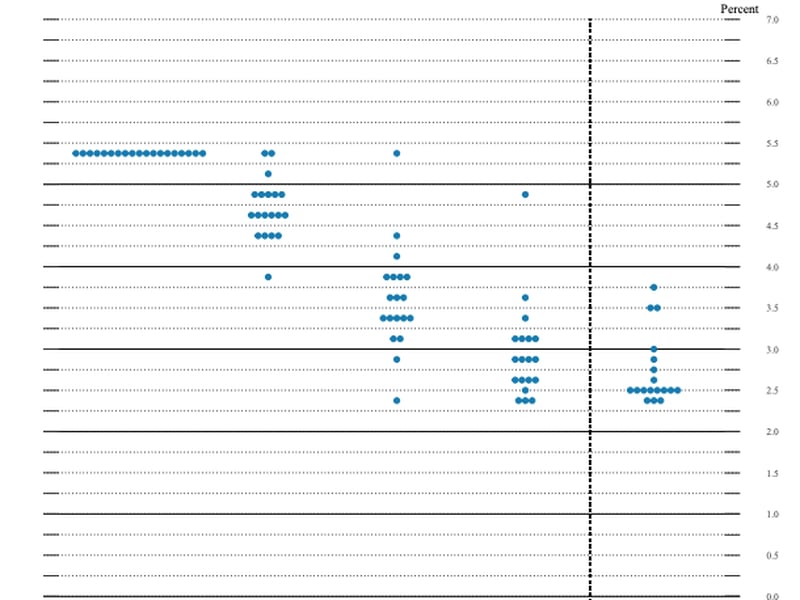TradFi Goes All-In on Fed Rate Cuts. What It Means for Bitcoin

The so-called "dots" released Wednesday as part of the U.S. Federal Reserve's policy decision showed central bankers expect 75 basis points in rate cuts in 2024. That's up substantially from just 25 basis points expected by policymakers three months ago.

Already in a sharp upswing since October on expectations of easier monetary policy, traditional markets soared further on the news, with all three major U.S. stock indexes climbing more than 1% and the Dow Jones Industrial Average topping 37,000 for the first time ever. Stocks are higher again Thursday, though more modestly.
Read more: Federal Reserve Holds Policy Steady, but Indicates More Dovish 2024
The rally in the bond market has been even bigger, with the yield on two-year U.S. Treasuries now having plunged roughly 40 basis points since the news hit to 4.32%, its lowest level since May. With the current fed funds rate, or overnight borrowing rate, at 5.25% to 5.5%, two-year money at 4.32% shows a substantial belief that significant rate cuts are soon to come.
Indeed, the CME FedWatch tool now shows a 21% chance of a 25-basis-point Fed rate cut as soon as January and an 84% chance of one or more rate cuts by March.
Checking other rate-sensitive markets, the U.S. dollar index is lower by about 2% since Wednesday's Fed news and gold has rallied 2.5% – both of which further suggest TradFi is, for now, fully buying into the rate cut story.
The Fed's dovish signal also boosted the price of bitcoin [BTC], which this week has been trying to recover from Sunday evening's "flash crash" that saw prices tumble more than 5% in the space of a few minutes. At $43,200 as of press time, bitcoin is now only lower by about 1% from its pre-crash price.
Are market participants getting ahead of themselves?
While the Fed's median forecast is for 75 basis points in rate cuts in 2024, markets have priced in nearly 150 basis points. Needless to say, for even the Fed's more modest expectation to materialize, it would require a substantial slowdown in the economy and/or inflation.
Claims of imminent recession have been popular this year, but the data continues to say otherwise. Third-quarter annualized gross domestic product growth was a whopping 5.2% – the fastest pace since the fourth quarter of 2021, when substantial government Covid stimulus was still sloshing through the economy. And just this morning saw even more good news, with a big decline in weekly initial jobless claims to their lowest level in two months and an unexpected rise in retail sales for November.
As for inflation, while it has subsided significantly from near double-digit levels in 2022, at 3.1% based on the latest Consumer Price Index (CPI), it remains well above the Fed's 2% target. The core rate of inflation – which typically garners more attention from central bank policymakers – has been more stubborn in coming down, and remained at 4% in the most recent report.








